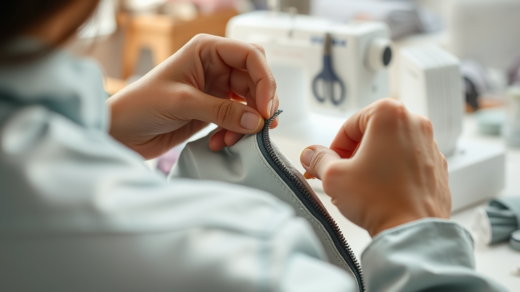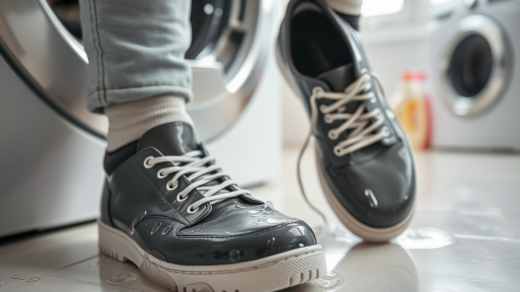Pilling on fabric is a common issue that many people encounter with their favorite clothing and home textiles. In this article, we will explore effective methods to remove pilling from fabric and practical tips to prevent it from happening in the first place. By following our guide, you can keep your garments and upholstery looking new and fresh for longer.
Understanding Fabric Pilling
Fabric pilling occurs when small fibers break loose from the main fabric body and gather on the surface in the form of tiny balls or puffs. This usually happens due to friction during wear and wash. Pilling is most common on fabrics like wool, cotton, polyester, and blends of these fibers. Understanding the cause of pilling can help you address the problem more effectively. The fibers that are most prone to pilling are those that are short and loose, as they can easily be dislodged and form those unsightly balls.
Effective Methods to Remove Pilling
Although pilling can be frustrating, several methods can help you remove it from your fabrics:
- Fabric Shaver: A fabric shaver is an electric device specifically designed to remove pilling. Simply run the shaver over the affected area to gently trim away the pills.
- Safety Razor: In the absence of a fabric shaver, a safety razor can effectively remove pills. Lightly glide the razor over the fabric, taking care not to cut the fabric itself.
- Scissors: For handpicking pills, small, sharp scissors work well. Trim each pill individually for precise removal.
- Pumice Stone: Special pumice stones, often called fabric stones, can be gently rubbed over the pilled area to lift and remove pills.
- Lint Roller: While it may not remove stubborn pills, a lint roller can pick up loose fibers and help reduce the appearance of pilling.
Preventing Fabric Pilling
Prevention is key when it comes to dealing with fabric pilling. Here are some tips to minimize the chance of pilling on your clothing and textiles:
- Proper Washing: Turn garments inside out before washing to reduce friction on the outer fabric. Use a gentle cycle and cold water to protect the fibers.
- Quality Detergents: Use a mild detergent designed for delicate fabrics. Harsh chemicals can weaken fibers, making them more prone to pilling.
- Fabric Softeners: Adding fabric softener can reduce friction between fibers during washing, thus minimizing pilling.
- Low Heat Drying: Air-drying or using a low-heat setting on your dryer can prevent damage to the fabric, which can lead to pilling.
- Proper Storage: When not in use, store your garments in a cool, dry place. Avoid cramming too many clothes together to reduce abrasion.
Choosing Pilling-Resistant Fabrics
One of the best ways to prevent pilling is by selecting fabrics that are less prone to it from the start. Look for textiles that are made from long fibers, such as certain types of wool and synthetic materials labeled as “”anti-pilling.”” Fabrics with tighter weaves and those that have been treated with special finishes to resist pilling are also good choices. Additionally, blends that combine natural and synthetic fibers typically exhibit better pilling resistance than pure natural fiber fabrics.
Regular Maintenance Tips
Regular maintenance can extend the life of your fabrics and prevent pilling. Brush your garments with a soft fabric brush after each wear to remove surface fibers that may lead to pilling. Also, consider using garment bags for delicate items when washing them in the machine. Lastly, follow the care instructions on your clothing labels to avoid causing unnecessary friction and damage to the fabric.
Conclusion
Removing pilling from fabric and preventing it requires a combination of proper care techniques and using the right tools. By following our guide, you can maintain the appearance and longevity of your garments and textiles. Implementing simple preventive measures, choosing the right fabrics, and keeping up with regular maintenance can significantly reduce the occurrence of pilling. Now that you are equipped with this knowledge, you can enjoy your favorite pieces looking their best for longer.
FAQs
1. Can I use a regular razor to remove pilling?
Yes, a regular safety razor can be used to remove pilling. However, you need to be very careful to avoid cutting the fabric. Lightly glide the razor over the surface to trim the pills.
2. Do fabric softeners really help prevent pilling?
Yes, fabric softeners can reduce friction between fibers during washing, which helps minimize the chances of pilling. They can make the fabric feel smoother and more resistant to friction.
3. Are there any fabrics that do not pill at all?
While no fabric is entirely immune to pilling, fabrics made from long fibers and tightly woven materials are less prone to pilling. Look for anti-pilling finishes when buying fabrics to reduce the likelihood of pilling.
4. How often should I use a fabric shaver on my garments?
Use a fabric shaver as needed, depending on the amount of pilling. Regularly maintaining your garments with light use of a fabric shaver can keep them looking fresh without causing damage.
5. Is air-drying better than using a dryer for preventing pilling?
Yes, air-drying is generally better for preventing pilling as it reduces the amount of friction and heat exposure that can damage fibers. If using a dryer, opt for a low-heat setting.


